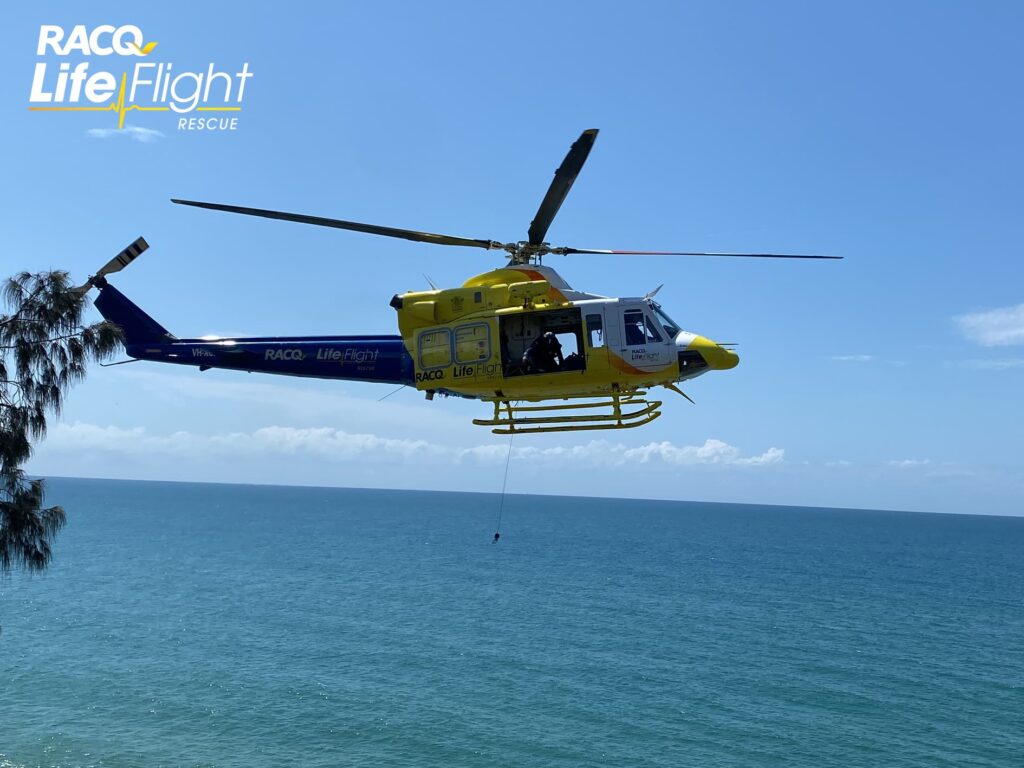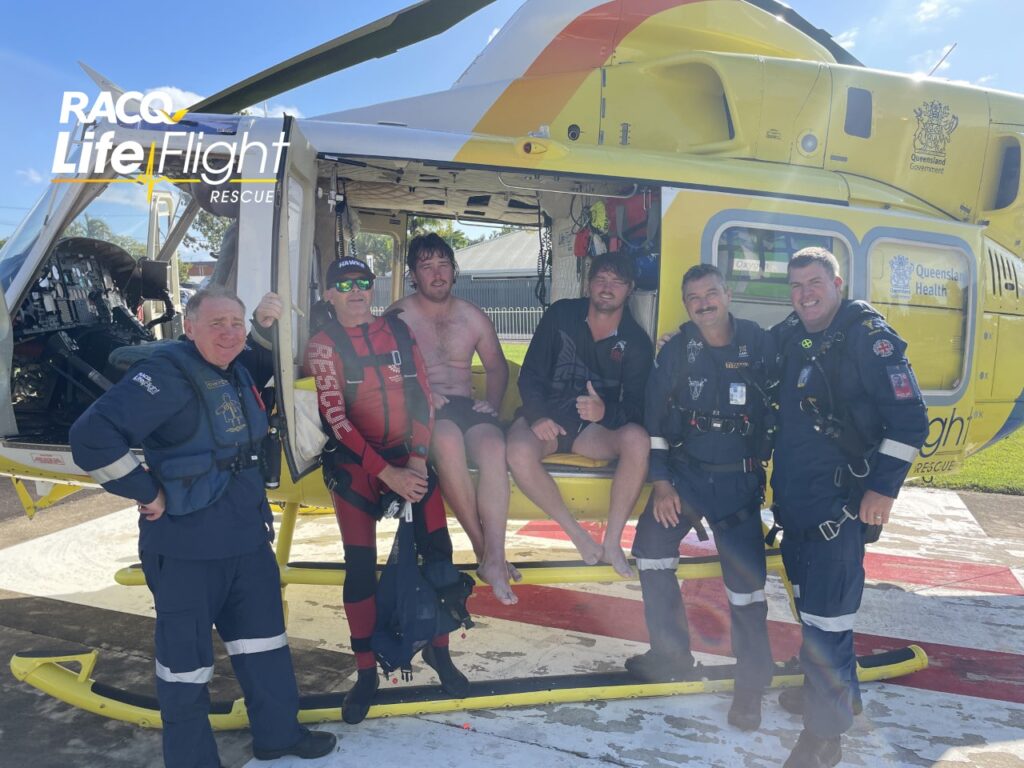
A record 374 people were helped by the Bundaberg RACQ LifeFlight Rescue helicopter crew last financial year, outstripping their previous record of assisting 306 people.
It was a significant contribution to an overall record 2022-23 financial year for LifeFlight Australia, with the service’s rescue helicopters, air ambulance jets, critical care doctors, flight nurses and paramedics helping 7,349 people in need.
LifeFlight traces its proud history in Queensland back to 1979 and the service has now come to the aid of more than 81,000 people.
The financial year also included the Bundaberg rescue chopper service’s 25-year anniversary.
Serving the Wide Bay, Burnett and far beyond, the chopper team spent more than 629 hours flying, covering bushland to beaches.
Missions varied from medical emergencies to farming accidents, but the most common reason for the crew to be tasked directly to an emergency scene, was to attend serious motor vehicle incidents.
RACQ spokesperson Lauren Cooney said 44 motor vehicle incidents required urgent aeromedical response.
They included on and off-road incidents.
“Across the state crashes continue to be one of the main reasons why RACQ LifeFlight Rescue is called out on missions,” she said.
“Last year Queensland had its worst road toll in more than a decade.
“When we look at what’s causing those crashes it continues to be the Fatal Five.
“That’s speeding, driving under the influence of drugs or alcohol, driving distracted, driving fatigued and not wearing a seatbelt.
“It’s simple. When you’re behind the wheel, make a commitment to get back to basics.
“Take road safety seriously and do everything you can to get to your destination safely.”
The top five mission categories in 2022/23 financial year for the Bundaberg RACQ LifeFlight Rescue helicopter were:
- Cardiac/chest pain (56 missions)
- Motor vehicle incidents (44 missions)
- Search (38 missions)
- Abdominal (31 missions)
- Neurological (25 missions)
The total cost of the missions performed by the Bundaberg crew is estimated to be $9.5 million, which comes at no charge to patients.
Significantly, 38 of the financial year missions involved searches or search and rescue operations and often required winch rescues.
In September, the Bundaberg chopper crew worked with the RACQ LifeFlight Rescue Sunshine Coast crew, to winch a medical team down to a man who had plunged 30 metres from a sea-side cliff at Coolum.
He was treated at the scene before being winched and airlifted to hospital.
After a short search following the activation of an emergency beacon, two brothers were successfully plucked from the ocean in a winch operation, after their boat was capsized by a rogue wave off K’gari (Fraser Island) in February.

Aeromedical missions to K’gari have also included treating and airlifting children bitten by a dingo or stung by Irukandji.
The Bundaberg RACQ LifeFlight Rescue helicopter crew was also called in to treat and retrieve a patient from a cargo ship, after she suffered a serious medical episode.
The financial year saw the Bundaberg base expand its Critical Care Doctor roster from three to seven days a week, further enhancing the high-level medical care provided by Queensland Ambulance Service Flight Paramedics.
LifeFlight Director of Clinical Services and Governance Dr Jeff Hooper said the the Critical Care Doctors provided definitive on-the-scene care.
“They are able to go to the roadside scenes to stabilise patients and provide definitive care, like they would in a tertiary hospital or tertiary intensive care unit,” Dr Hooper said.
“Essentially our doctors, nurses and paramedics carry pretty much a mobile intensive care unit where they can do lots of procedures – whether that’s on the side of the road or within a small hospital, to stabilise patients and bring them to that higher level of care.”
While there have been numerous high-profile rescue missions, much of LifeFlight’s aeromedical work involves Inter-Facility Transfers (IFT) – moving patients between medical facilities – which ensure all communities have equal access to the best possible healthcare, no matter where they are in the state.
“I think that the work we do for IFTs is really important to the people of Queensland – the majority of Queensland is a rural environment and people are a long way from really high levels of tertiary hospital care,” Dr Hooper said.
“Our feeling is that every Queenslander deserves that opportunity to be rapidly transferred to a world class standard of care.”
2,153 missions were performed by the combined fleet of RACQ LifeFlight Rescue helicopters with the majority tasked by Retrieval Services Queensland on behalf of Queensland Health.





